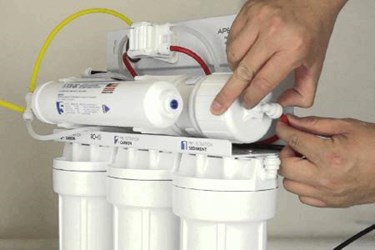How To Know It's Time To Replace Your RO Membrane

By Divyesh Delawala, Oceanides Global
Reverse osmosis, or RO, is one of the finest technologies to purify water containing high total dissolved solids (TDS) levels of more than 500 ppm. Reverse osmosis plant exporters explain the technology as a separation technology where dissolved and invisible impurities in water are separated with the help of semi-permeable membrane or RO membrane that works under high pressure.
Constituents of impurities and dissolved solids are magnesium salts, calcium, iron, nitrates, lead, fluorides, arsenic, etc. These constituents are usually found in groundwater. In urban areas and cities, groundwater is distributed through municipal pipelines and sometimes water tankers are also employed to meet the demand of water supply. Minerals like calcium and iron are good for human body, but other impurities such as lead will harm in the long run.
The RO membrane is a critical part of the reverse osmosis system. It is a thin film that is made up of microscopic pores. In normal operation, the membrane used in RO elements can become contaminated by biological matter, mineral buildup, insoluble organic contaminants, and colloidal particles.
Apart from contamination, the membrane can get clogged to the extent that they can become ineffective in removing the dissolved salts effectively, cause a drop in the output of filtered water, or both. This is why most RO purifier models designed for domestic use are fitted a with UV purification feature to eliminate the chances of contamination.
It is important that water should first flow via a pre-filter in order to protect the delicate RO membrane, extend its life, and to prevent frequent fouling. This pre-filter cartridge will filter the water and make it free from the dirt, sand, silt, and other suspended sediments. You need to change this filter every six to nine months or as per the water-quality supply you are getting. If you take this filter lightly or ignore it too long, it can foul or get clogged. This will affect the life of your RO membrane.
RO water purifiers are an expensive but superb way to remove toxins and contaminants from water. Servicing of RO plants is also costly, as the pre-filters and membranes of these plants cost more.
This is why reverse osmosis plant exporters always advise to maintain your RO purifiers. Regular replacement of membranes can save money that you may need to spend on repairs.
If you have any doubt about RO purifiers, ask experts. They will tell you how to maintain your purifier.
